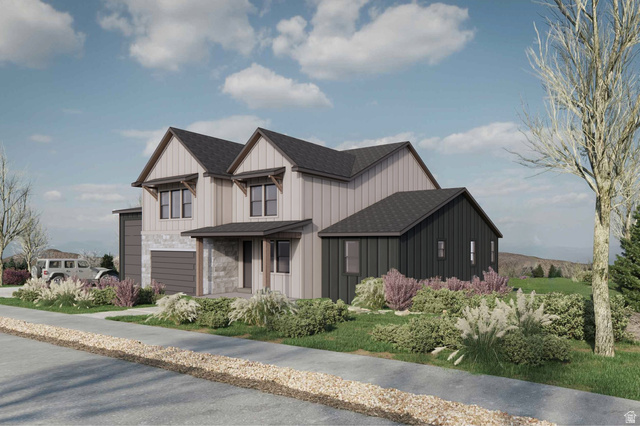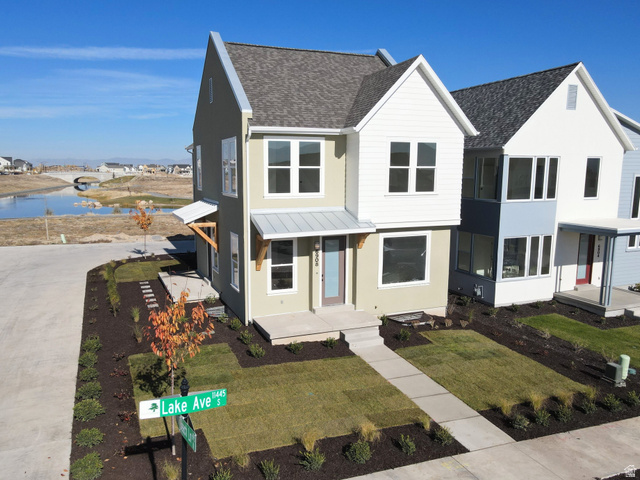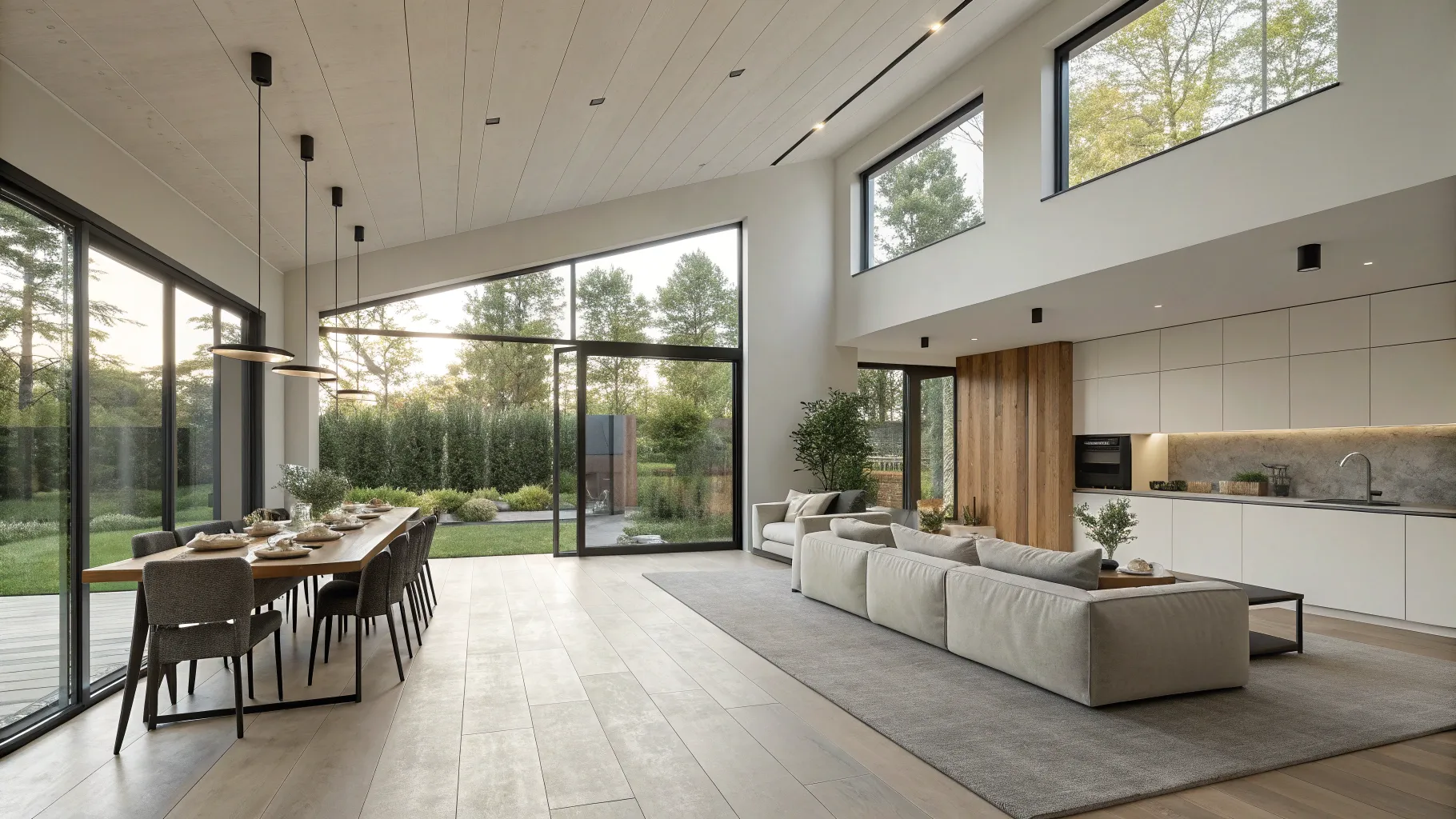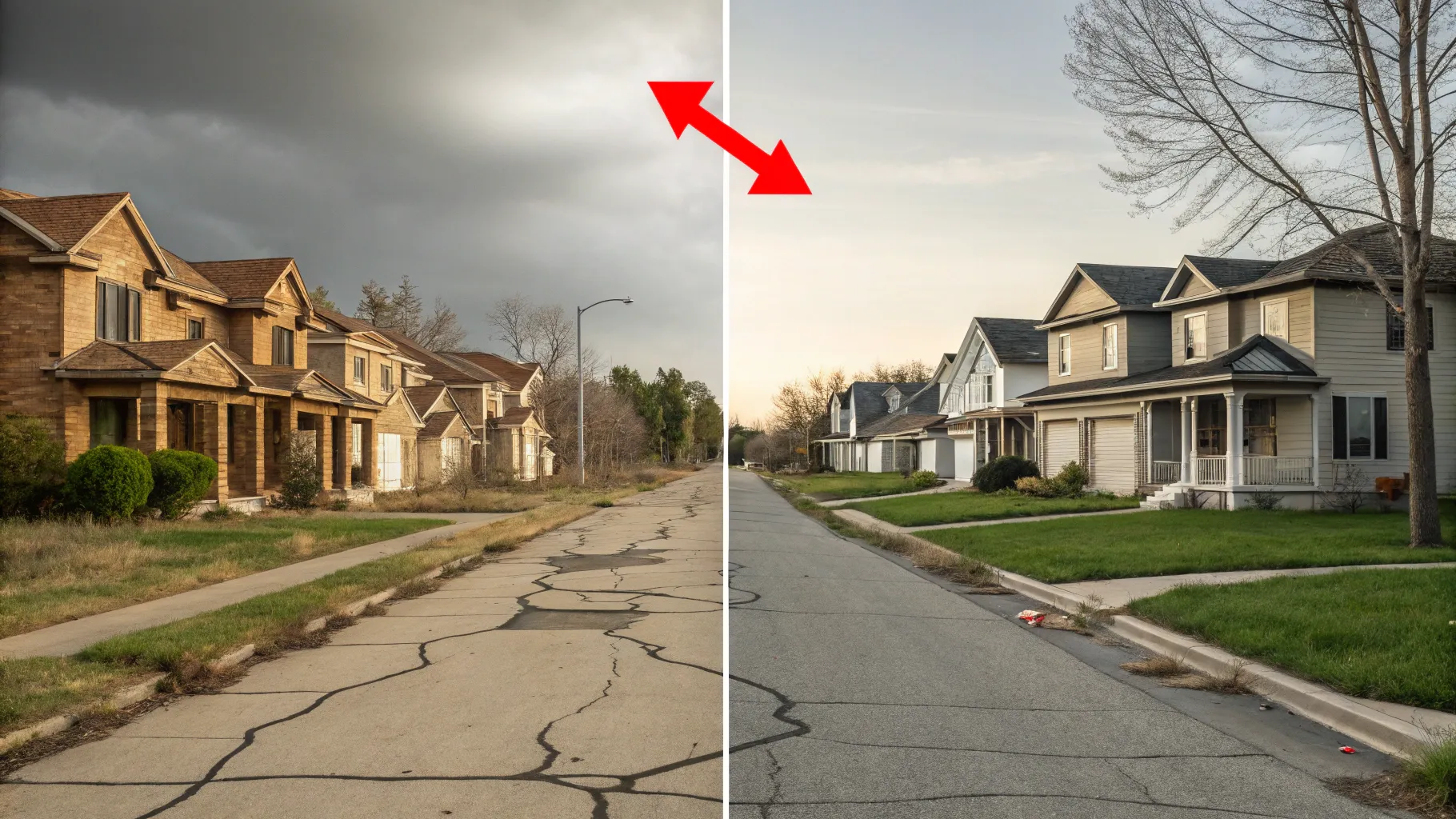Read more about Inside the Most Beautiful Single-Storey Modern Homes of 2025
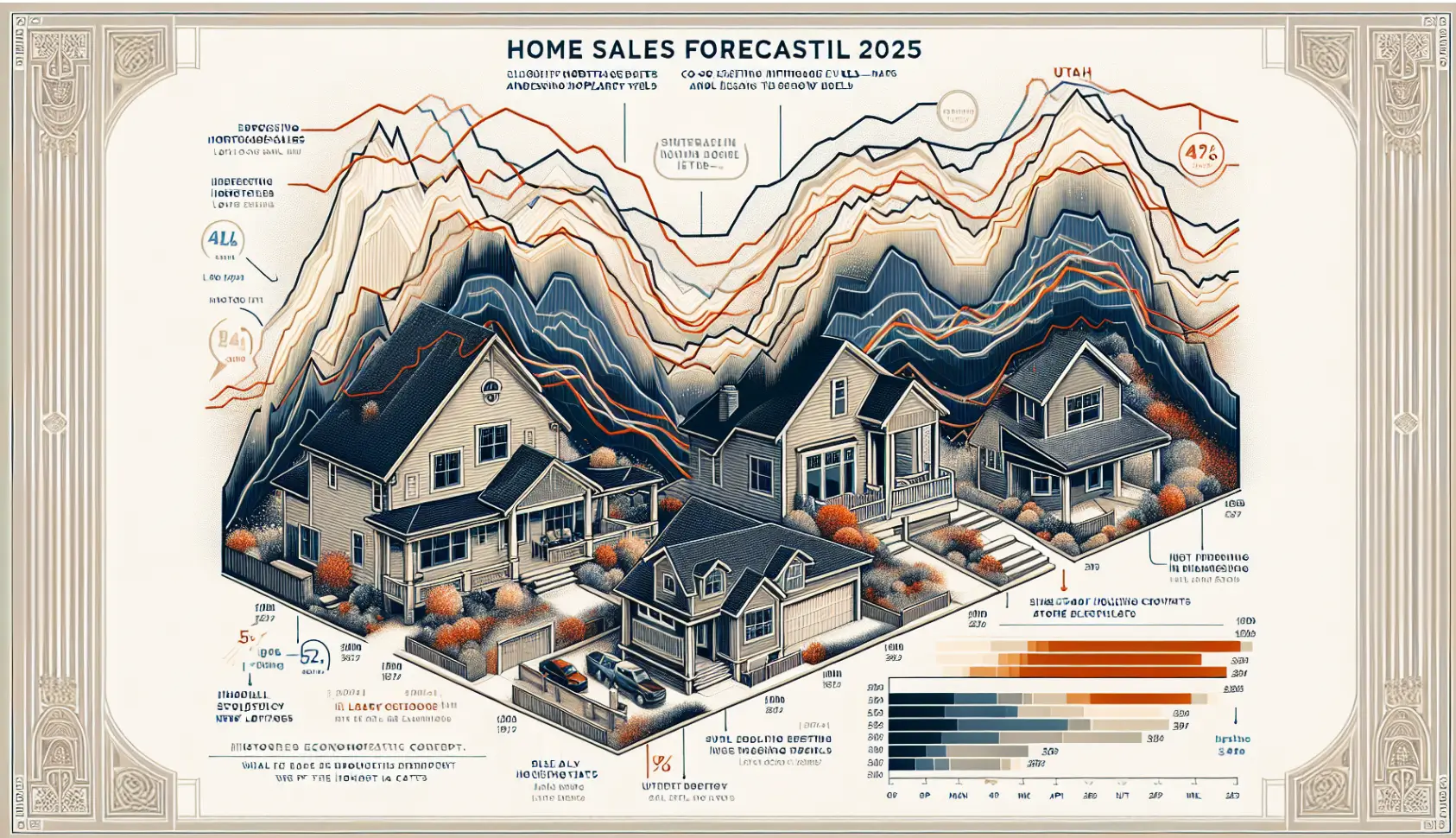
According to Fannie Mae's latest housing market forecast, home sales are expected to remain sluggish through 2025 due to rising mortgage rates and inventory levels. In this blog, we'll dive into the details of their real estate market predictions for housing starts, home prices, and mortgage rates over the next few years.
Existing Home Sales Decline
Existing home sales have experienced a notable decline, impacting the overall housing market landscape.
March Sales Drop
In March, existing home sales decreased by 4.3%, reaching an annualized pace of 4.19 million. This figure comes from the National Association of Realtors (NAR) and highlights the sluggish market conditions.
April Continues the Downward Trend
April saw a further decline, with sales dropping by 1.9% compared to March. This decrease also mirrored the 1.9% drop from the same month last year.
Historical Context
Currently, home sales are at their lowest levels since 1995. If the current trend continues, 2024 could see even fewer existing home sales compared to 2023, which already marked a 28-year low.
Factors Contributing to Decline
- Rising mortgage rates
- Increased inventory levels
New Listings Remain Steady
Despite the decline in existing home sales, new listings have shown resilience in recent months.
Steady Flow of New Listings
Fannie Mae's analysis indicates that the flow of new listings has remained steady, even amid rising mortgage rates. This stability suggests that some homeowners are willing to list their homes despite the financial challenges.
Homeowner Motivations
Many homeowners with low mortgage rates (2.5% to 5%) have been hesitant to sell. However, some are choosing to list their homes despite the average current rates hovering around 7%.
Impact on Sales Decreases
This steady flow of new listings suggests that additional sizable decreases in sales are unlikely. Given the already low levels, further significant drops in sales would be difficult.
Utah Home Sale Forecast
The Utah home sale forecast indicates a complex market. While existing home sales may remain low, the steady stream of new listings could stabilize the market in the coming years.
Single-Family Housing Starts
Single-family housing starts have experienced fluctuations, reflecting broader economic and market conditions.
Recent Trends
In March, single-family housing starts fell by 8.7%, followed by a 4% decline in April. These figures highlight the month-to-month changes in the housing market.
Seasonally Adjusted Rates
The seasonally adjusted annualized rate of single-family housing starts in April was down by 4.4% from March. However, it showed a 17.7% increase compared to April 2023.
Regional Variations
- Midwest: Up by 41%
- South: Up by 177%
- West: Increased by 18.4%
- Northeast: Decreased by 99.5%
Future Projections
Fannie Mae predicts that single-family housing starts will increase in 2024 and 2025, despite the current high levels of under-construction homes.
Under Construction Levels
As of April, the seasonally adjusted annualized rate of single-family houses under construction was at 682,000. This is down from the peak of 829,000 set in May and June of 2022 but remains the highest level since August 2007.
Comparison with Multi-Family Units
Unlike single-family housing starts, multi-family units under construction have been declining from their peak in August 2023. Currently, the rate is at 919,000, close to all-time record highs since the early 1970s.
Forecast for Existing Home Sales
Fannie Mae has revised its forecast for existing home sales, influenced by changing mortgage rate expectations and economic conditions.
Revised Forecast
Existing home sales are projected to continue their decline, with a seasonally adjusted rate of 4.19 million units in March, dropping to 4.14 million in April. This downward revision is primarily driven by higher anticipated mortgage rates.
Impact of Mortgage Rates
Fannie Mae's forecast for existing home sales through 2025 has been modestly revised downward due to expectations of higher mortgage rates. Rates are expected to remain close to 7% through the end of the year before potentially trending downward in 2025.
Higher Rate Environment
The higher rate environment is projected to dampen housing activity through 2024. This is expected to slow modestly compared to previous projections, reflecting a downward revision in the forecast.
Consumer Behavior
Consumer surveys suggest that households are taking a wait-and-see approach, consistent with the latest housing forecast. This indicates that significant changes in activity are unlikely until affordability improves.
Utah Home Sale Forecast
The Utah home sale forecast remains complex, with existing home sales expected to stay low. However, a steady stream of new listings could stabilize the market in the coming years.
Forecast for Home Prices
Fannie Mae's forecast for home prices presents a mixed bag of insights. While the overall trend points to growth, the rate of increase is expected to slow down over the next few years.
Home Price Index Predictions
For Q1 2024, home prices are expected to peak at a 7.4% gain compared to Q1 2023. This is a significant increase, driven by strong market dynamics.
Slowing Growth Rate
Despite the positive start, the growth rate is anticipated to slow down. By Q4 2025, home prices are projected to see a modest gain of 1.5% compared to Q4 2024. This indicates a deceleration in the growth rate.
Yearly Comparisons
In 2023, the growth rate was 6.6%, and for 2024, Fannie Mae forecasts a 4.8% increase. By 2025, the growth rate will dip to 1.5%, well below the long-run average of 3-5% annual increases.
Higher Interest Rates Impact
Despite the forecast for higher interest rates, Fannie Mae still predicts an upward trend in home prices. This is a more bullish outlook compared to their January predictions.
Comparing January and May Forecasts
In January, Fannie Mae predicted a 3.2% increase in home prices for 2024. By May, this forecast was revised to 4.8%. For 2025, the January forecast was a 3% increase, which was later adjusted to 1.5% in May.
Interest Rate Revisions
Fannie Mae's interest rate forecast for 2024 has also been revised upward. In January, the average 30-year fixed rate was predicted at 6.1%. By May, this was adjusted to 7%.
Market Implications
The Utah home sale forecast suggests that home prices will continue to rise, albeit at a slower pace. This could stabilize the market despite higher mortgage rates.
Comparing Fannie Mae's Forecasts
Fannie Mae's forecasts have undergone several revisions, reflecting changing market conditions and economic variables. Understanding these changes provides valuable insights for future market trends.
Existing Home Sales
Fannie Mae's forecast for 2025 projects just over 4.5 million existing home sales. This represents an 8% increase from 2024 but is still 15% below pre-COVID levels.
Historical Context
The average number of existing home sales per year since 1989 is just over 5 million. The 2025 forecast of 4.5 million is about 500,000 less than this historical norm.
Revised Forecasts
The forecast for 2023 was revised from 4.27 million to approximately 4.2 million. This would be the lowest number of home sales since 2010, highlighting the market's current challenges.
Comparison with Zillow
Zillow's forecast for 2023 predicts just over 4 million existing home sales, about 148,000 less than Fannie Mae's predictions. This difference underscores the variability in market forecasts.
Interest Rate Projections
Fannie Mae's January forecast for the average 30-year fixed mortgage rate in 2024 was 6.1%. This was later revised to 7% in May, a significant upward adjustment.
Impact on Home Prices
Despite higher interest rates, Fannie Mae expects home prices to increase faster than previously forecasted. This optimistic outlook contrasts with the more conservative forecasts made earlier in the year.
Conclusion
The Utah home sale forecast remains complex, with various factors influencing market trends. By comparing Fannie Mae's forecasts, one can gain a clearer picture of the potential future market dynamics through 2025.

